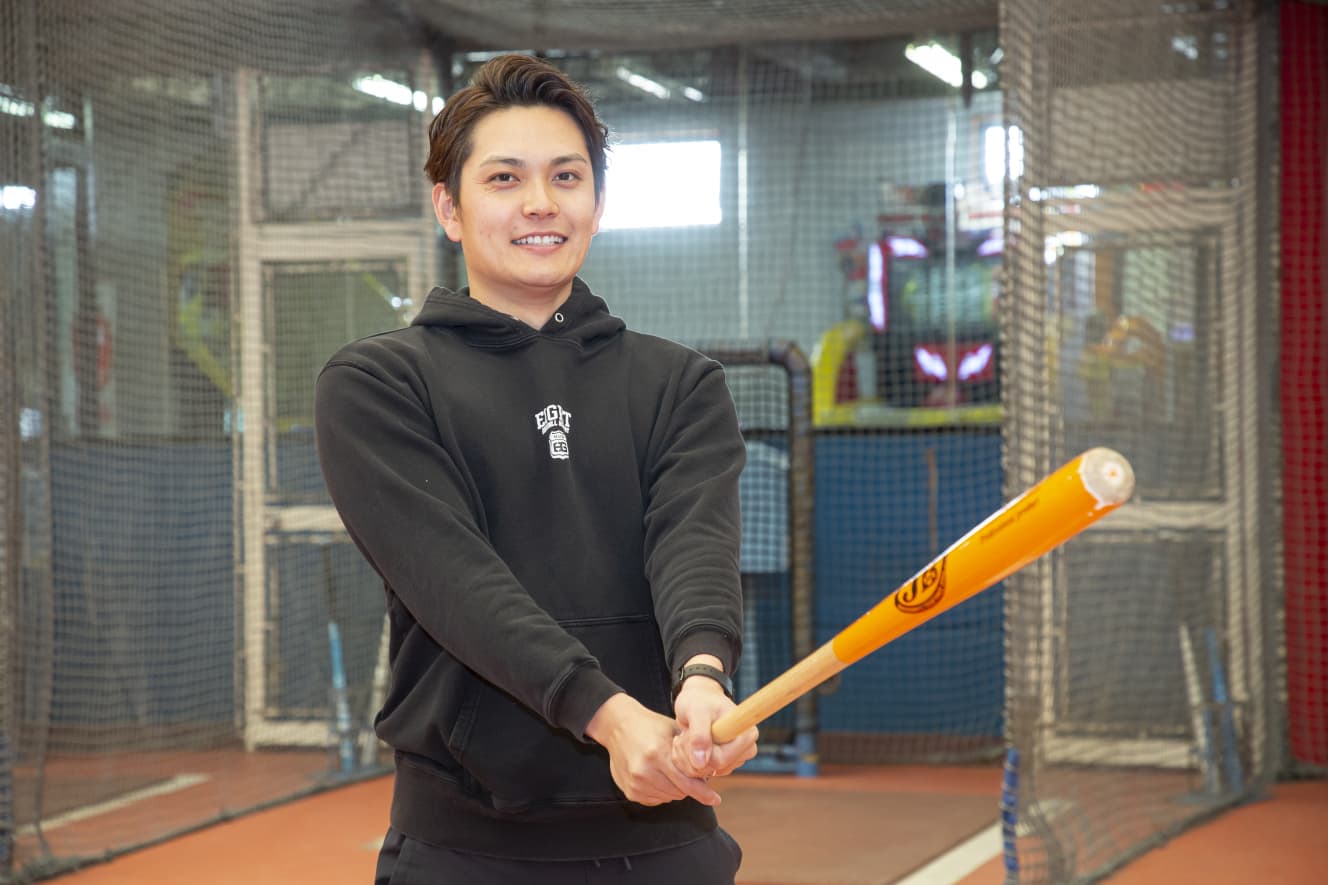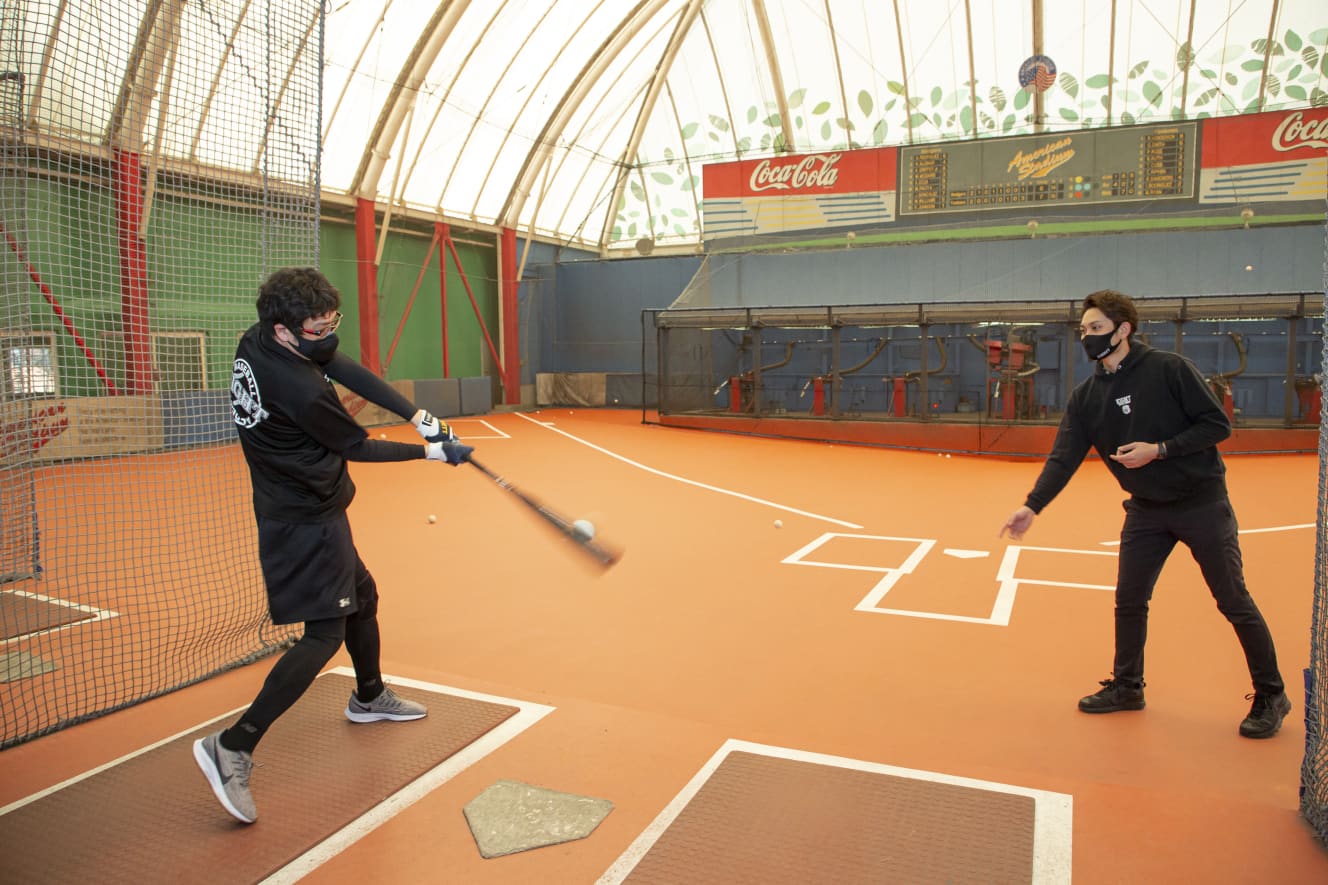Can the “Uncle Matsuzaka Generation” keep up with the evolution of baseball with the latest education?
Uncle Matsuzaka's Re-introduction to Baseball [Batting].
Hitting a golo is what the pitcher wants! Is it OK to take an upper swing?

With the opening of professional baseball and Major League Baseball, a fun season has begun for baseball fans. At the same time, in addition to watching the games, adults are enjoying playing grass baseball, and there are probably many youngsters who will begin playing baseball this spring.
As the generational shift in professional baseball continues, most of the players born in 1980 who dominated the baseball world, known as the “Matsuzaka Generation,” have retired from active baseball and are now in the position of coaching players. This means that not only in the world of professional baseball, but also in the world of baseball, former baseball players who have passed the age of 40 are now in a position to teach their own children and the little ones on their teams.

The writer is one such member of the Matsuzaka generation, a generation that is not too old to be instructing children. I wondered, “When it comes time to teach baseball to the little ones, will I really be able to teach the children of today with the skills I know? This is the question. When watching high school baseball, it is obvious that the speed of pitches and the quality of breaking pitches have improved since our days, and baseball theory has developed in many different ways. On the other hand, my theory of technology has remained stuck in the Showa and Heisei eras. It is not good for the children to be taught my old-fashioned baseball, and more importantly, it is not good for the children who are the future of baseball.
So, as a reminder to myself not to inadvertently impose my old Showa and Heisei-ism on the children, I went to a baseball school for children as a part of my research. In order to learn what kind of instruction is offered at the newest schools, I was allowed to experience a special lesson.
The first thing they decided to teach me was batting. After all, baseball is no fun unless you can hit. This time, I asked for a “reintroduction” to the Eight Baseball Academy.


You don’t have to hit a golfer!
The first thing that was drilled into our generation’s batting was, “Hit a ground ball!” That’s it. This is based on the very reluctant idea (or so we were taught) that a fly ball is caught and out, but with a ground ball, an error can be expected at some point because the play involves catching the ball, sending it out, and then the first baseman catching the ball. Is that idea still the same today?
We don’t force people to hit ground balls at the school. Of course, there are situations where it is necessary to hit a ground ball due to the flow of the game or tactical reasons, but I want the children to first learn the joy of making a batted ball go far. Besides, the pitcher throws the ball with the intention of making the batter hit a ground ball, so if the batter tries to hit a ground ball there, he or she will be at the mercy of the pitcher.
It is true that the pitcher tries to hit a ground ball, and the defense practices that very much, but it is strange that the hitter tries to hit a ground ball. I’ve been playing baseball for over 30 years now, and I’ve never questioned it at all. …… So what kind of awareness should I have when I hit the ball?
When you try to hit a golo, your swing is like a “radish cutter,” where you slam the ball from above. If you do this, the bat and the ball will only hit at a “point” and it will be difficult to hit the ball. What we teach at the school is to place the ball on the path of the bat. In this way, the bat and ball spend more time in contact with each other, and the ball can fly farther.
There, he was taught to swing as if he were hitting the ball with the grip end. As a person who was trained in the Showa era of baseball, I was very conscious of “returning the head quickly. If I swing with the image of hitting the ball with the grip end, won’t the head not return?
I often end up with a botched golfer when I try to force the head to return. Do you have any idea what I’m talking about?
Yes, there is. Seventy percent of all outs are hooked groundballs. ……
If you swing with this mindset, the head will return naturally.
At first it felt strange, but after a few swings, I felt the head return smoothly.

Let’s practice with the mindset of hitting the fly!
Now, in order to improve the “goro-hitting mindset” that has become completely ingrained in my body, the next thing I worked on was to practice swinging at low balls with the mindset of hitting flies with an upper swing.
I found that trying to hit a low ball with an upper swing makes for a rather cramped swing.”
Indeed, the swing looks like an ugly hit-and-run failure.
So, try hitting the ball with the mindset of salvaging it from the bottom, even if it turns out to be a low fly. Follow-through (for right-handed hitters) is also OK, even if you let go of your right hand and use only your left hand. It is.”
Absolutely no upper swing!” Just hit it! Follow through with both hands firmly! As someone who grew up being told, “It’s not easy to do well ……. Still, as I continued, I began to get a good feel for hitting the ball. Huh? Isn’t this what is called “angling” the batted ball? In fact, the only home run I ever hit over the fence was a chance encounter in a very narrow ballpark, and the rest were low trajectories even when I hit them just right, and I was having trouble getting the ball up, but there are signs of improvement: ……!

sides can be open. Oh my god!!!
As I began to get a good feel for hitting the ball, the next thing I was taught was that it is acceptable for the left side (of a right-handed batter) to be open during the swing. When we were children, we used to say, “Tighten your armpits! I was taught harshly that …….
The Giants’ Hayato Sakamoto and the Orix’s Yutaro Sugimoto are particularly noteworthy, because they are able to play the inside corner well by opening their arms. It is difficult to teach this technique to children, so I teach them that it is OK to be open. Once they learn this technique, they are able to hit the ball hard into the fair zone, even on courses that would otherwise only result in foul balls.

The swing of tightening the sides, hitting from above, and returning the head quickly is a thing of the past. After only an hour of instruction this time, I was able to swing with the exact opposite mindset. Finally, I tried hitting the ball with the awareness of what I had been taught, and the three effects I felt were as follows.
-
1】I was able to get a better angle on the ball.
-
2] The head returns naturally.
-
3] I can now hit inside pitches smoothly, whereas I was usually plugged in.
Particularly in point [3], when I swung at an inside ball, which used to be tight, I tried to swing with the image of pulling out the grip end, and the head ran very naturally, and a strong hit ball flew into the fair zone. If only I had known that another 30 years earlier, I could have been a regular in high school!
I wish I had been taught as a child (laughs). I envy the children of today. The school also participated in the voluntary training of Sugimoto of the Orix
Baseball skills are evolving day by day. One of the most appealing aspects of baseball is that the Matsusaka generation, which will turn 42 in 2022, still has a lot to learn. Why don’t the baseball-loving men of the same generation learn about the latest theories once again?

EIGHT BASEBALL ACADEMY: A baseball school for first- through third-grade students. Instruction is provided at two locations, Setagaya School and Yokosuka School.
Instaglam: @eight.baseball, @eightba.yokosuka
Reporting and writing: Diceke Takahashi Photography: Kazuyuki Sugiyama Cooperation: American Stadium